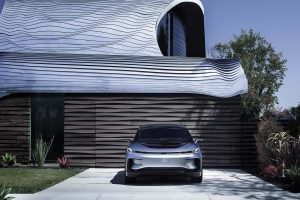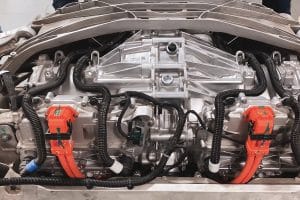A $500 million, 2,500 home development project will come to the City of Austin located near Tesla’s Gigafactory Texas as the electric automotive plant is catalyzing employment in the area and bringing on a need for more housing.
Hines, a real estate development company based out of Houston, has plans to develop a $500 million housing community on 1,400 acres. The plot of land will be large enough to have 2,500 new houses and between 1,250 and 2,000 multifamily units. Mirador, the project’s name, will be developed in the southeastern portion of Austin, in a location within close proximity to Tesla’s Gigafactory Texas, as just a fifteen-minute drive will get you to the factory from your front door.
Dustin Davidson, a managing director for Hines, said that the influx of employment opportunities, especially Tesla’s new factory, have surged the market for Austin’s residential real estate. “Lots of employment opportunities coming; Tesla’s obviously the big one, but they’re just one of many, and we believe more will come,” Davidson said to the Austin Business Journal (via KXAN).
Hines announced details of the project on its website:
“Mirador will consist of 2,500 single-family lots, 50 acres of multi-family and townhomes (including attached, detached, duplexes, quadplexes) and 75 acres of commercial land. The development will continue a partnership with Gehan Homes and Lennar Homes, add David Weekley Homes, Highland Homes, MHI Homes, and will bring on more builders to in the future. Conveniently located off the 130 Toll and Highway 71, the community offers a suburban ambiance with easy access to the new Tesla Gigafactory, the Circuit of the Americas Formula One racetrack, as well as all the local restaurants, parks, live music venues and other attractions Austin offers in under 15 minutes. Plus, residents can make use of the convenient on-site amenities, such as the 60-acre lake, over 600-acres of greenbelt, community parks, extensive trails and swimming pool.”
Tesla’s Gigafactory Texas is expected to amend an area weakened by the COVID-19 pandemic. Travis County officials launched a “Declaration of Disaster” in March 2020, and Federal Reserve data showed a 10.2 percent spike in unemployment filings from April 2019 to April 2020. According to a presentation given by Tesla in June 2020, the automaker projected that its new plant would supply “5,000 middle-skill jobs that fit a targeted economic development need” and would directly contribute $600 million in annual sales activity. The factory was also expected to create 4,000 new non-Tesla jobs due to “secondary effects.”
Gigafactory Texas’ most recent estimates have projected at least 15,000 new jobs both directly and indirectly at the plant. As of October 2021, Tesla had already created 5,000 new jobs in Austin, the most that any company had created in 2021. Amazingly, Tesla has not received an approval certificate from the State that would allow it to build vehicles at the plant and deliver them to customers, yet it still created more jobs than any other company in the Austin area last year.
AUSTIN: AMERICA’S NEW HOT SPOT
Austin has been one of the United States’ most heavily developed cities in the past several years. Tesla may be the biggest name to move its corporate headquarters to the City, but it is not the only company to establish a relatively drastic presence in the area. Google is investing $50 million in Texas this year to develop office space. Amazon is building a new 3.8 million square foot distribution center in nearby Pflugerville. Apple is building a $1 billion campus in north Austin and will move some of its employees to the area.
However, Tesla’s Factory seemed to spark the job creation, according to Austin-area realtor Paul Smith. “Once Tesla was announced, now all of a sudden you have job creation. That’s the one thing that it didn’t really have is, southeast Austin was kind of neglected for a little bit, right?” Smith said. The surge of corporate projects in the area has contributed to skyrocketing home costs. The neighborhood closest to Mirador had its average house price jump $93,000 from December 2020 to December 2021, Redfin data suggests.
The influx of economic growth, which has largely been fed by the vast number of projects and companies headed to the region, has largely fueled housing costs to skyrocket thanks to increased demand. More families will move to the Austin area in the coming years due to its attractiveness to corporations and large companies. Austin was ranked #1 on Zillow’s hottest housing market for 2021. In 2022, the City ranks 10th.





